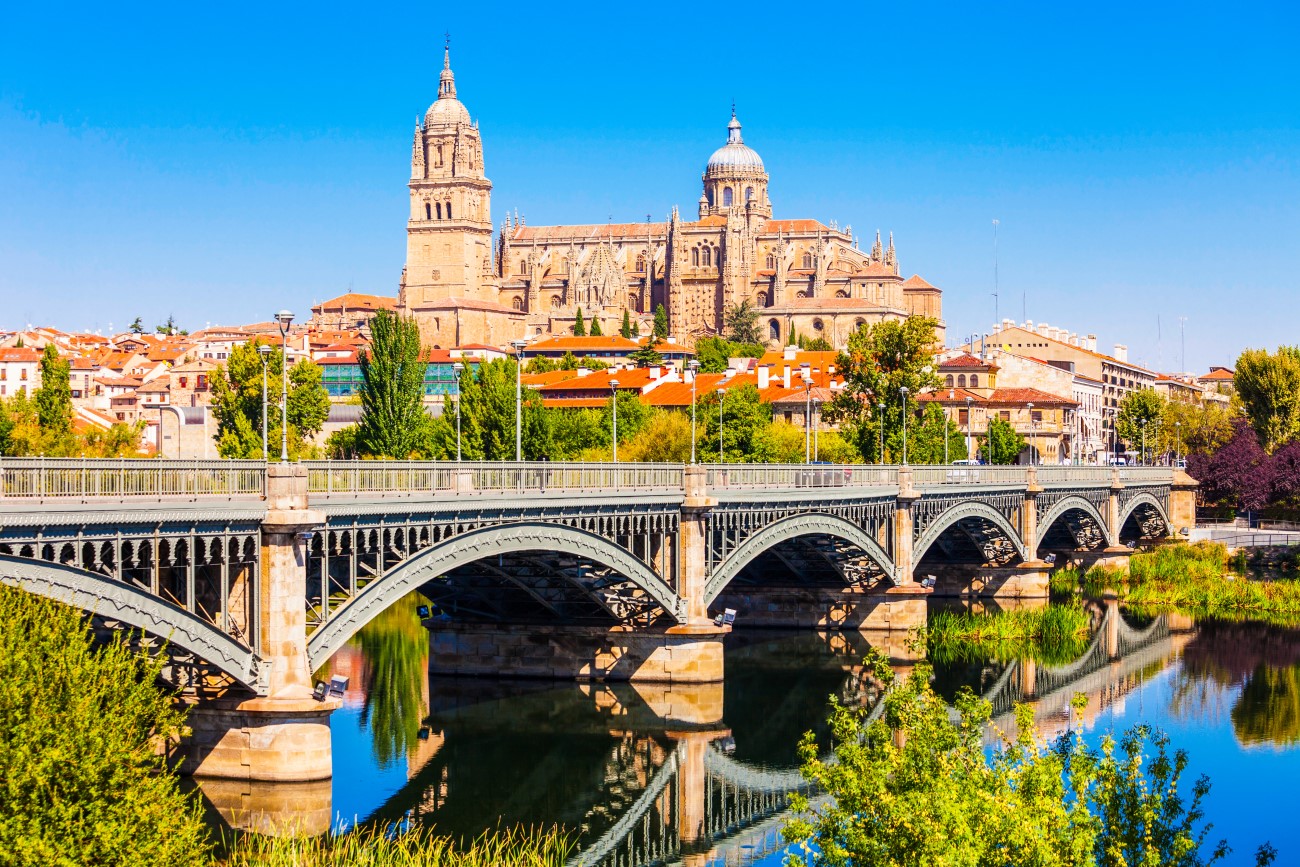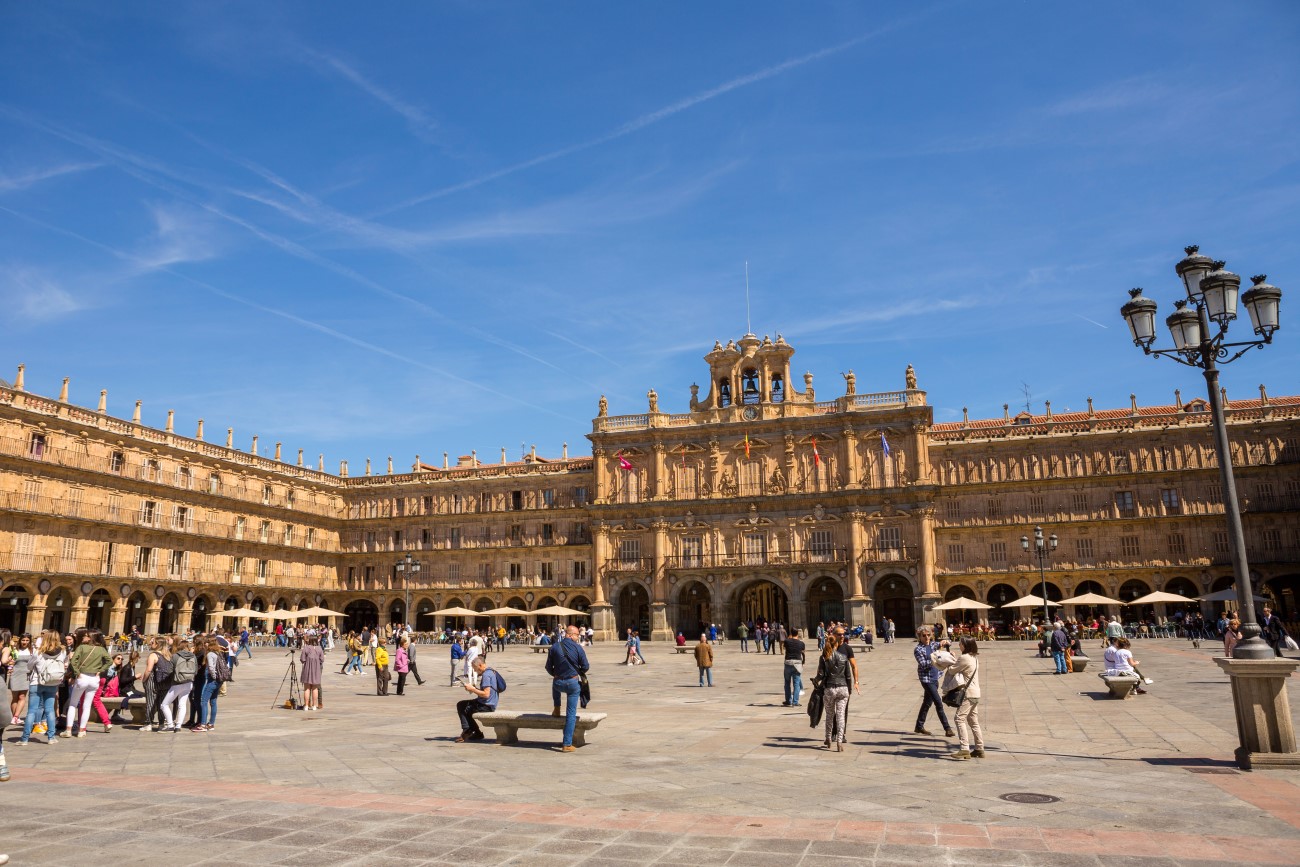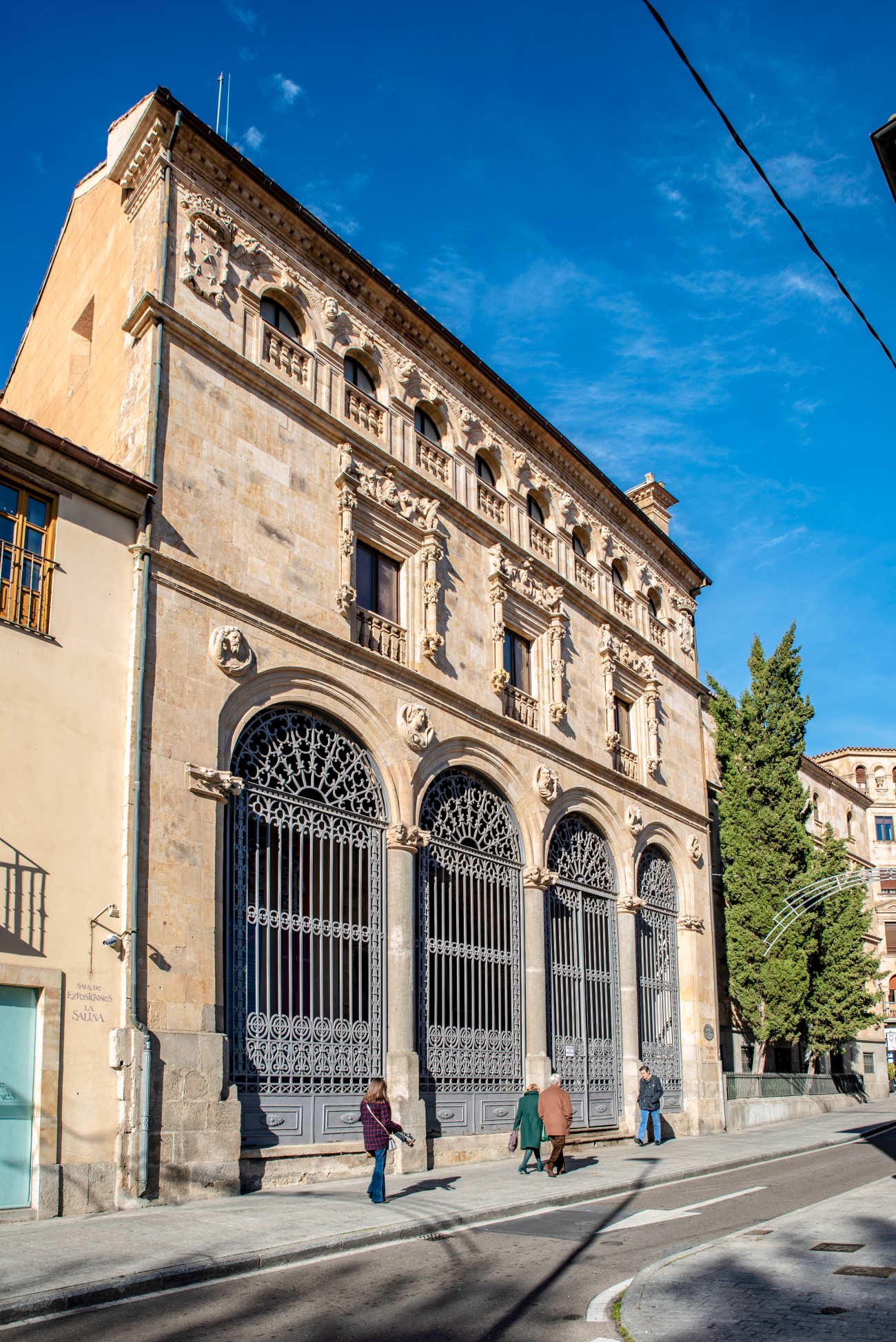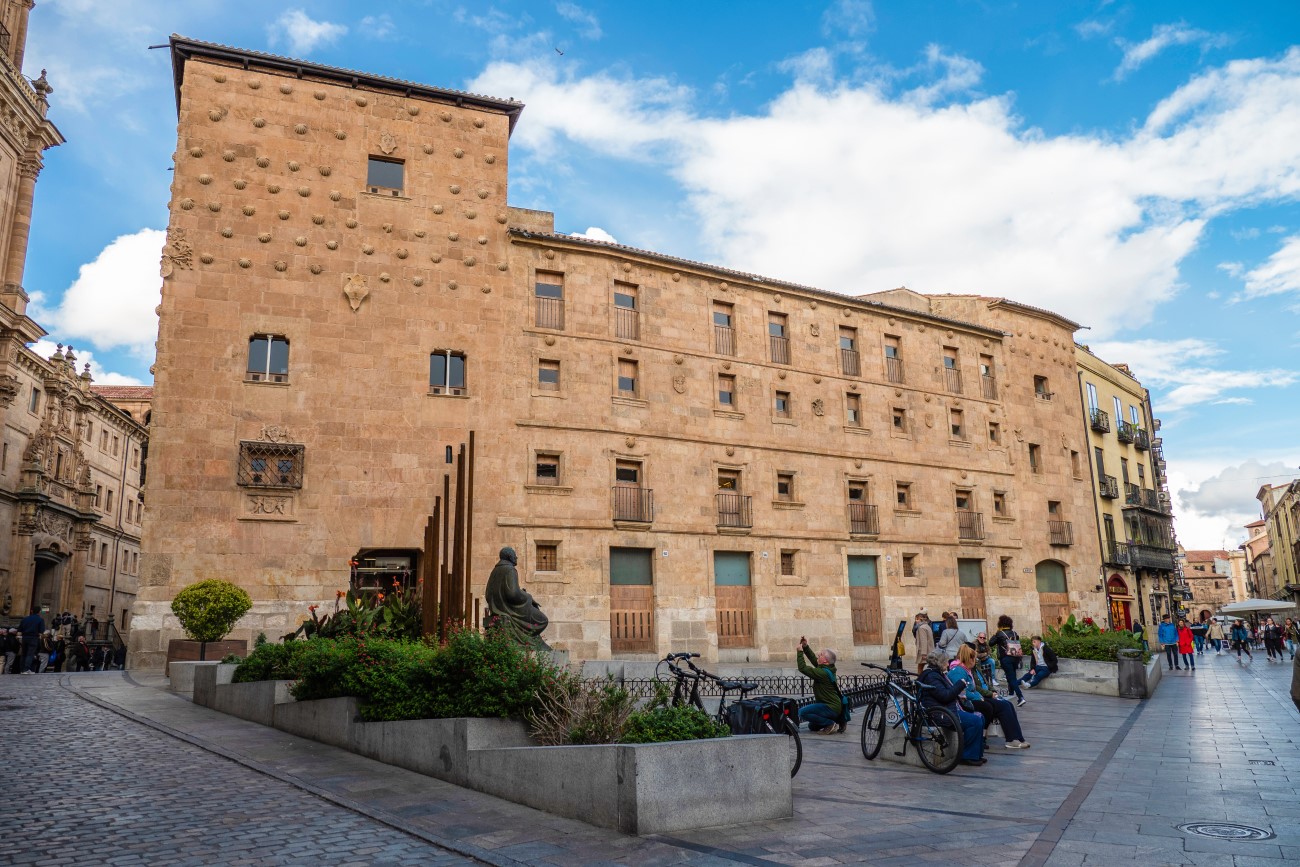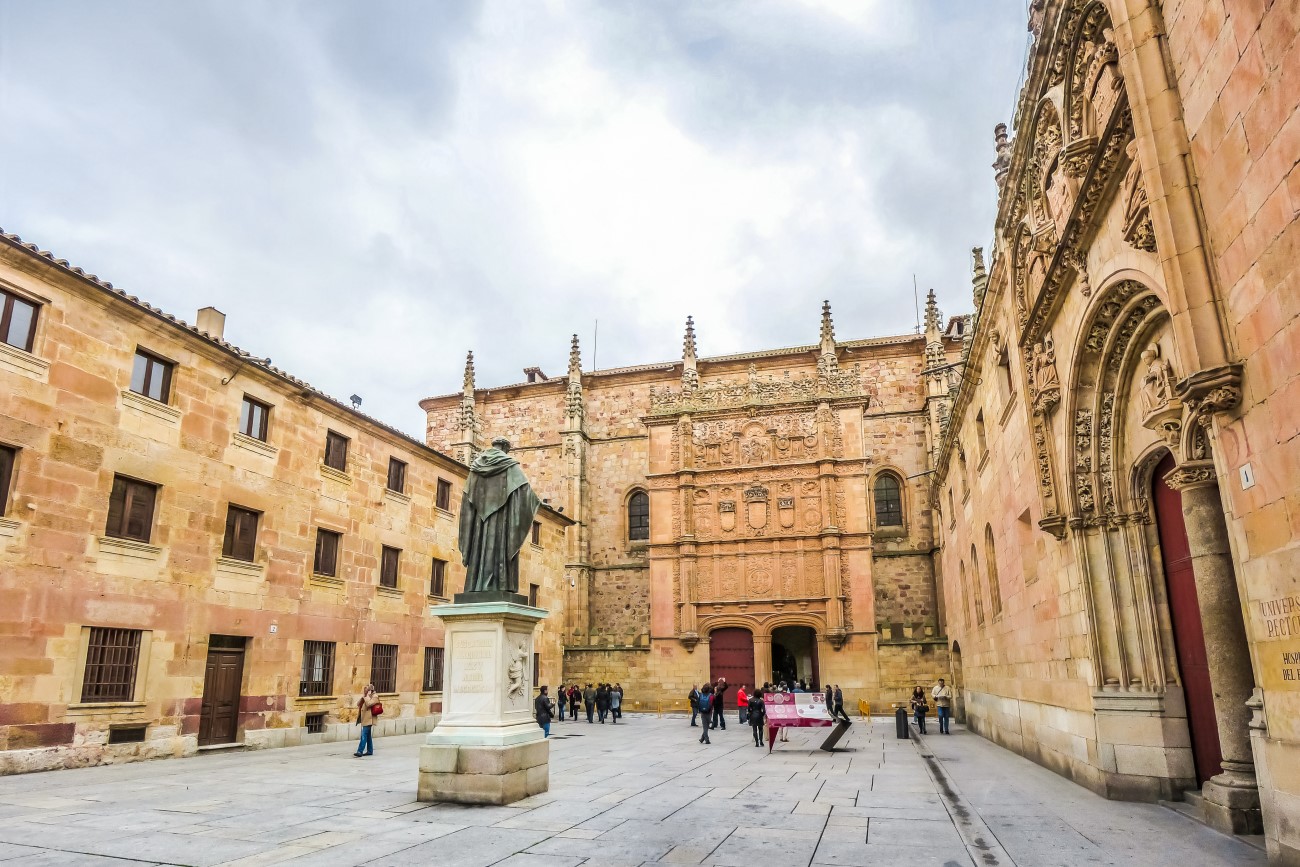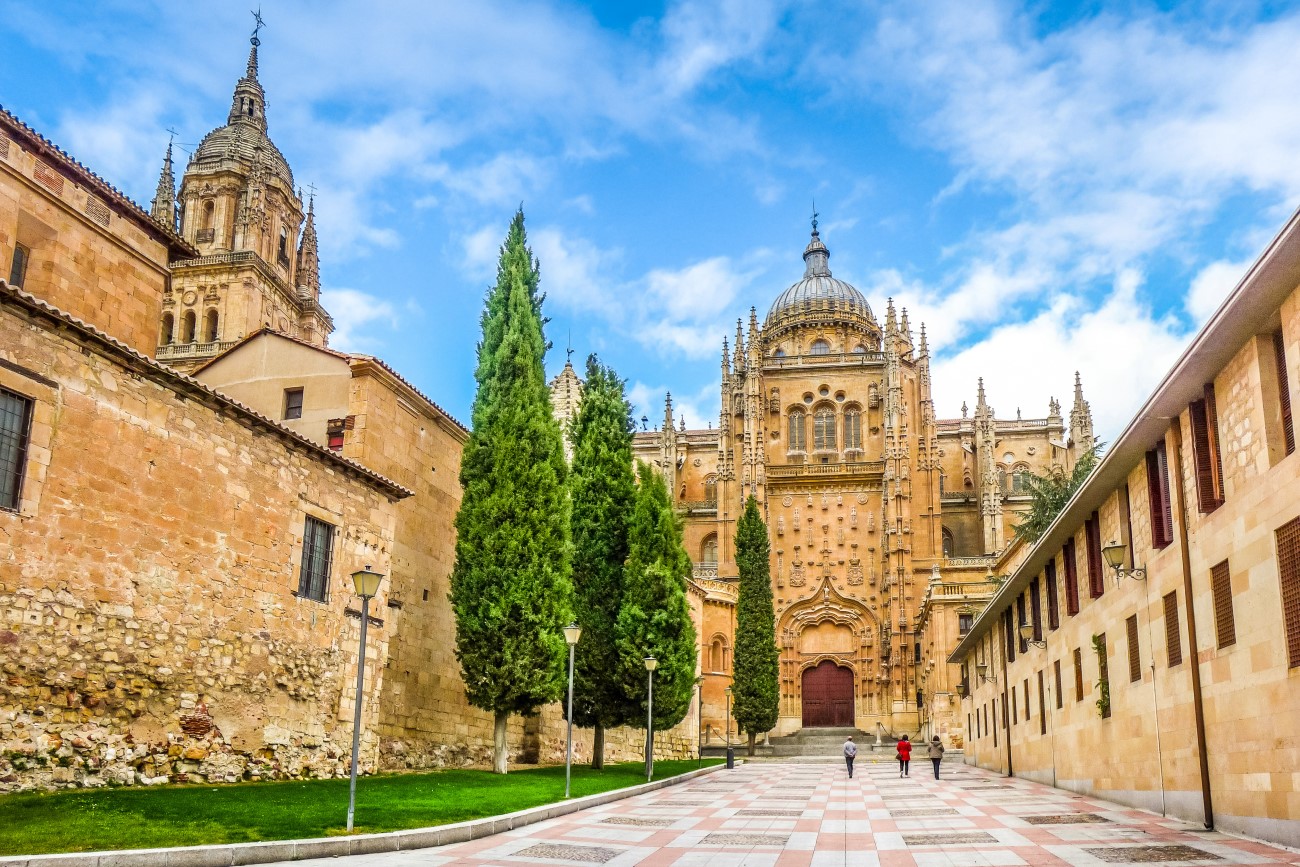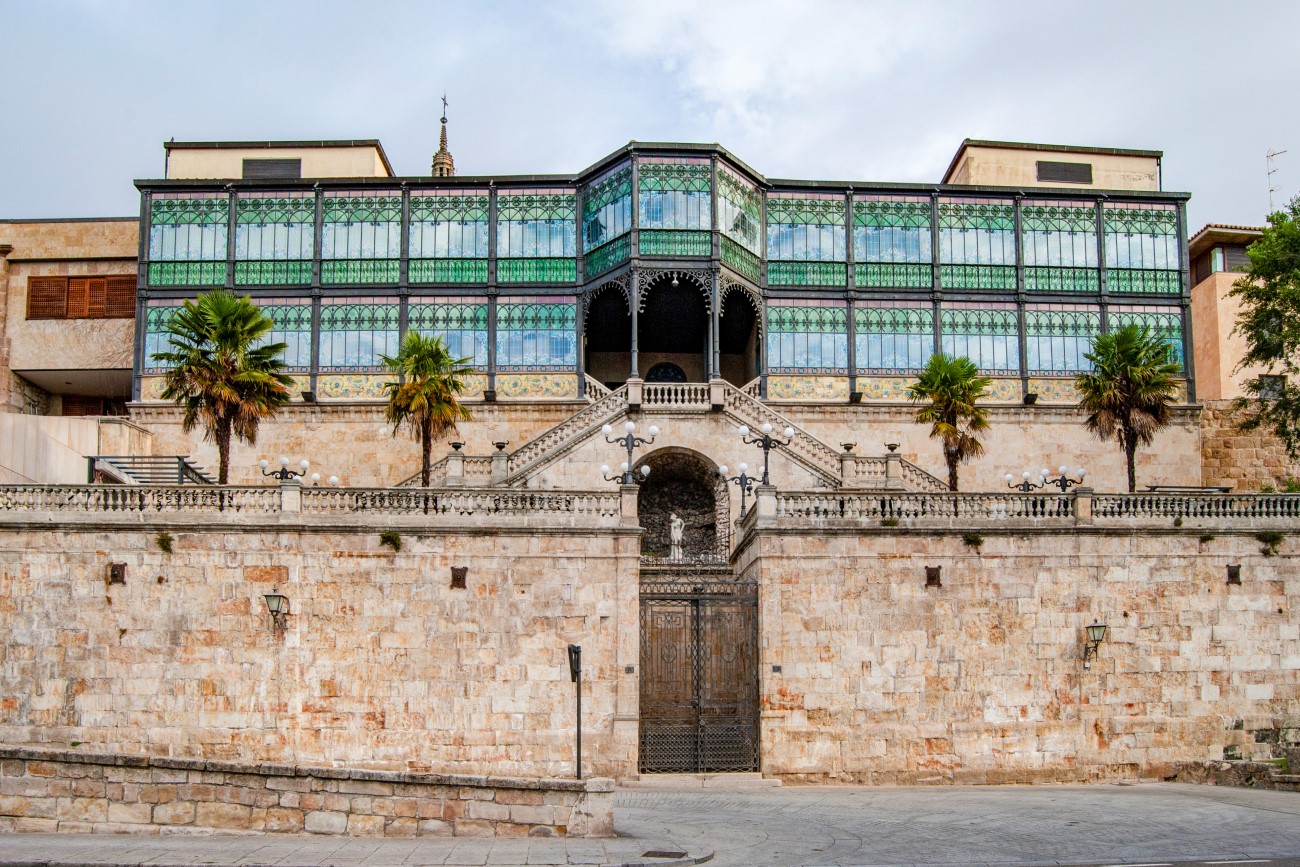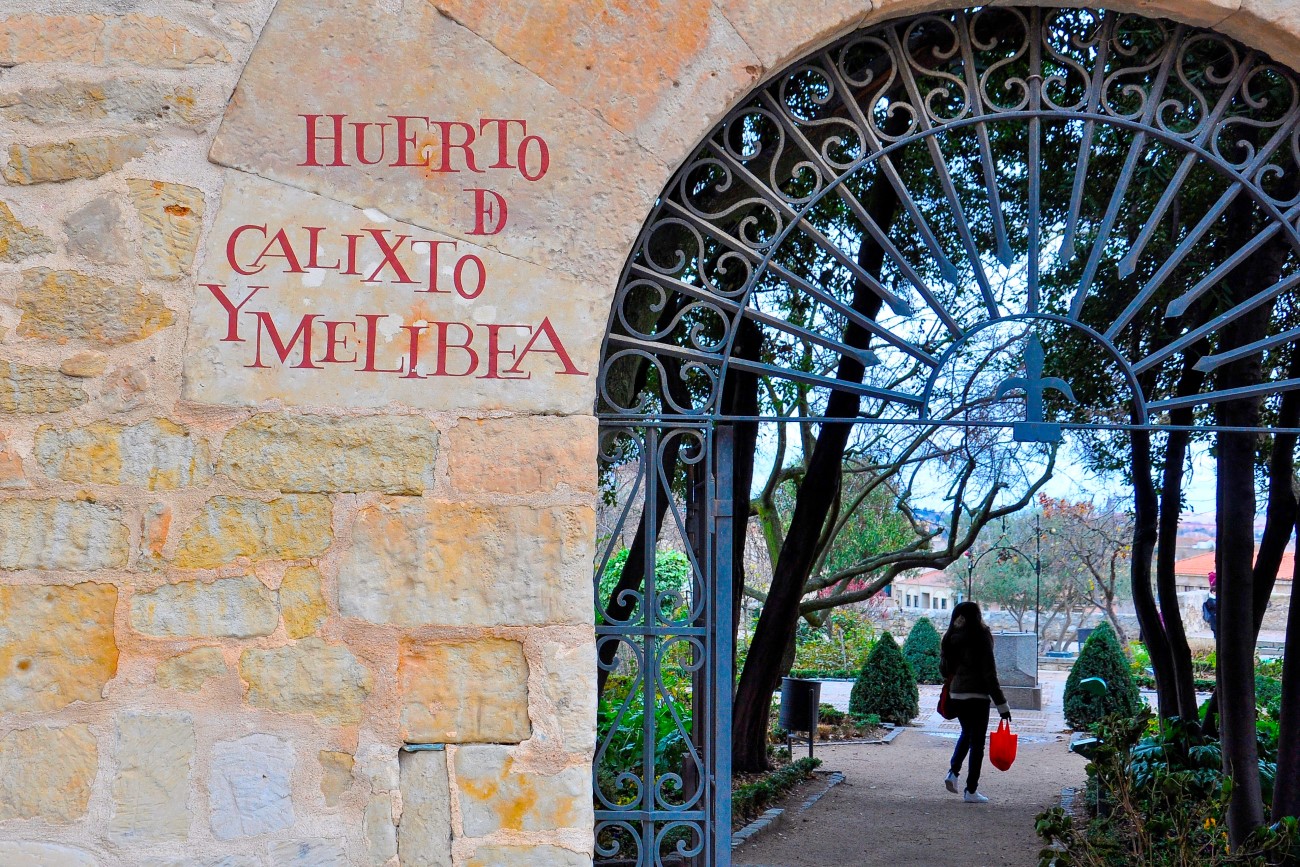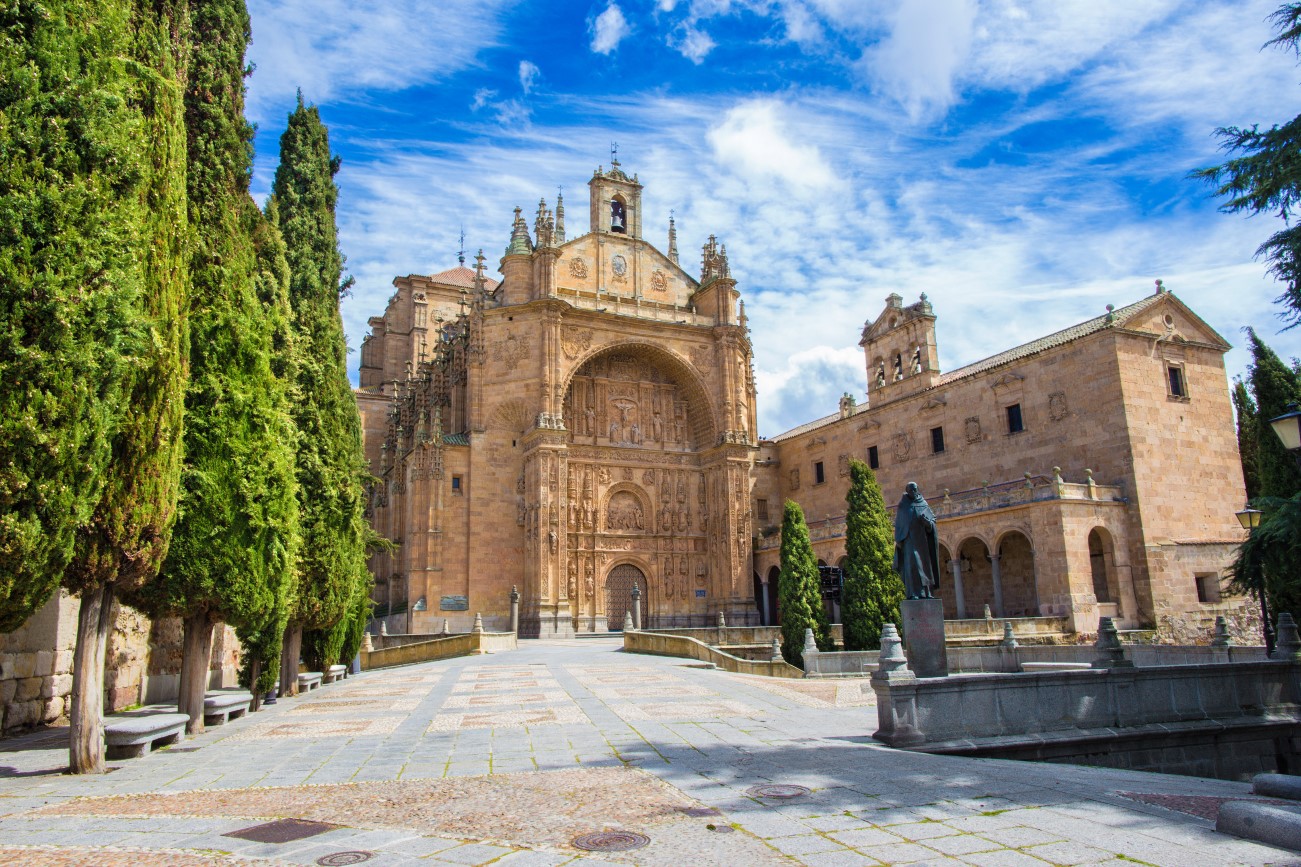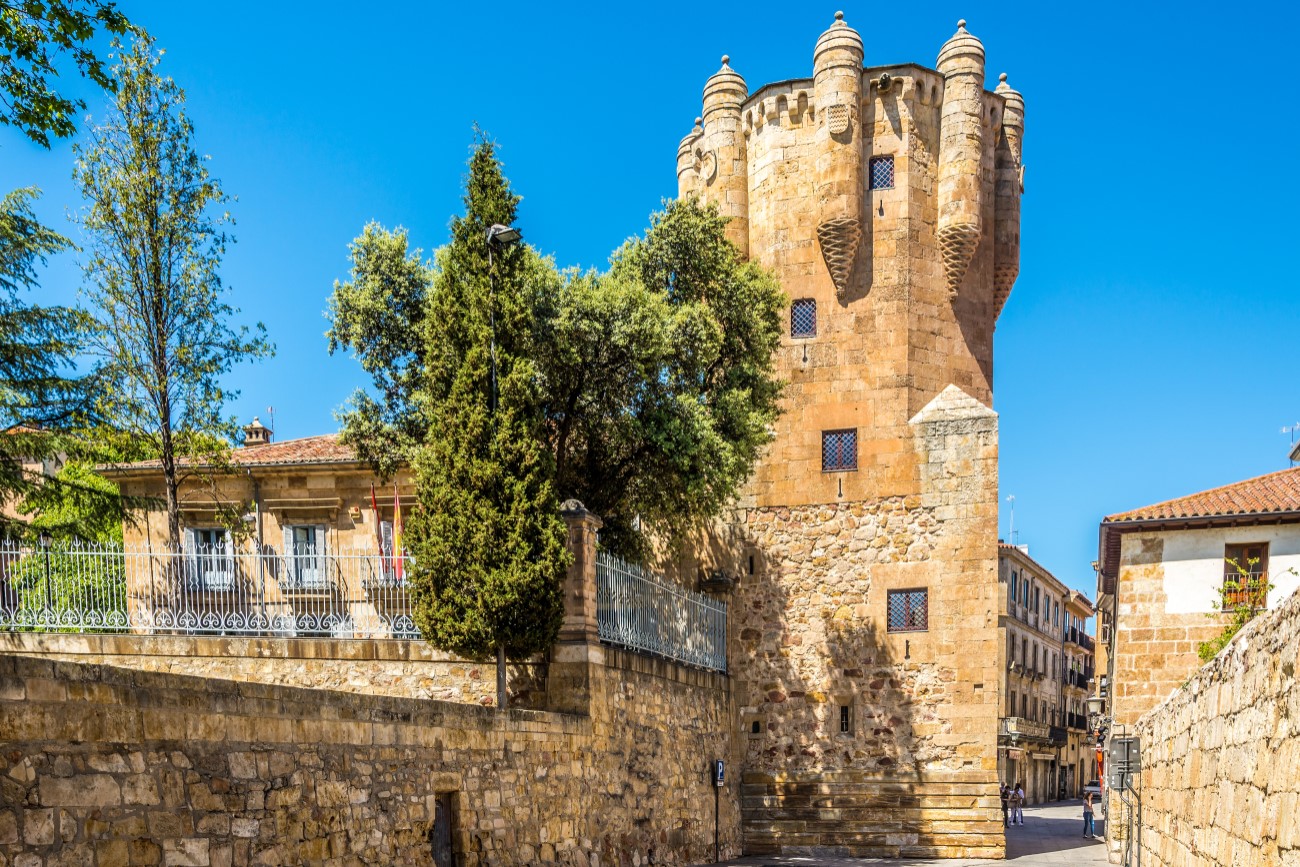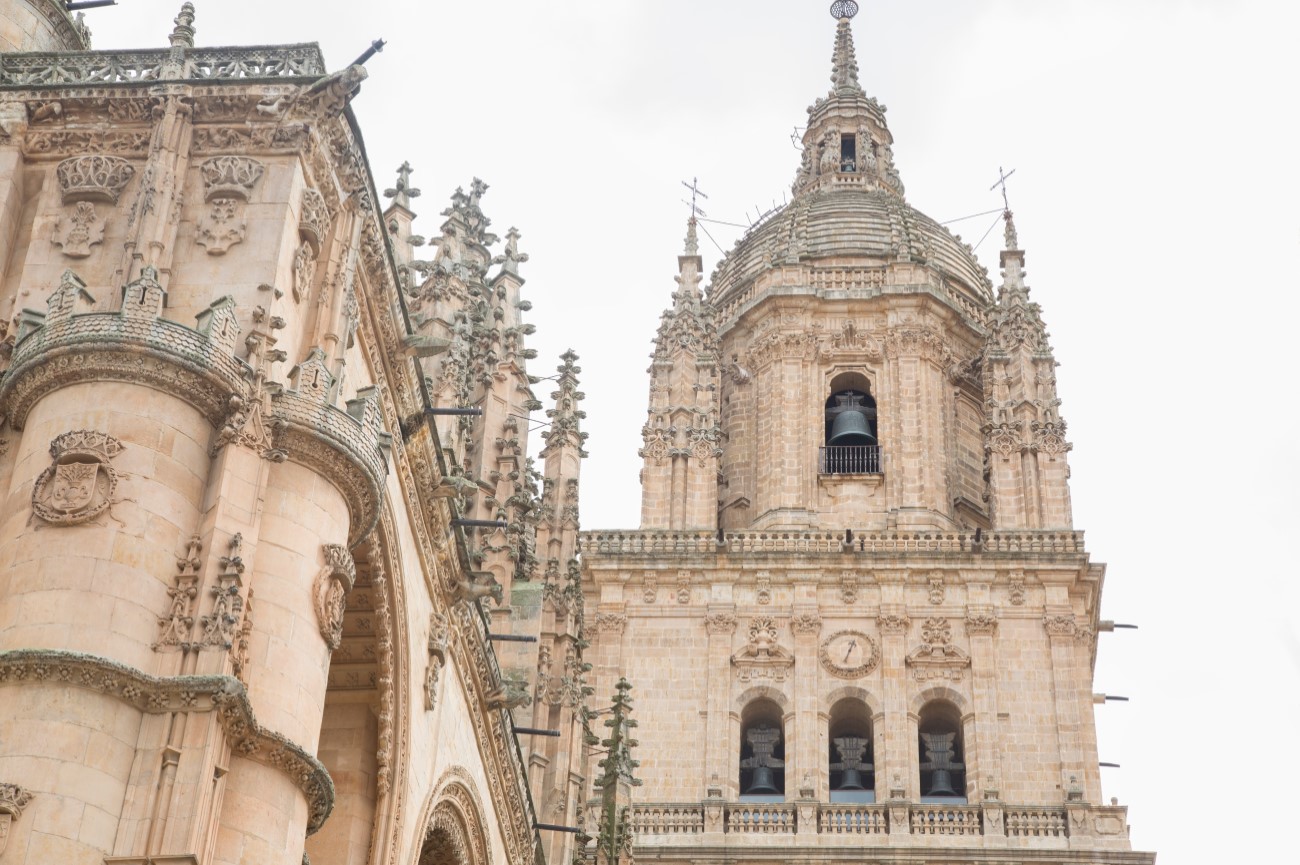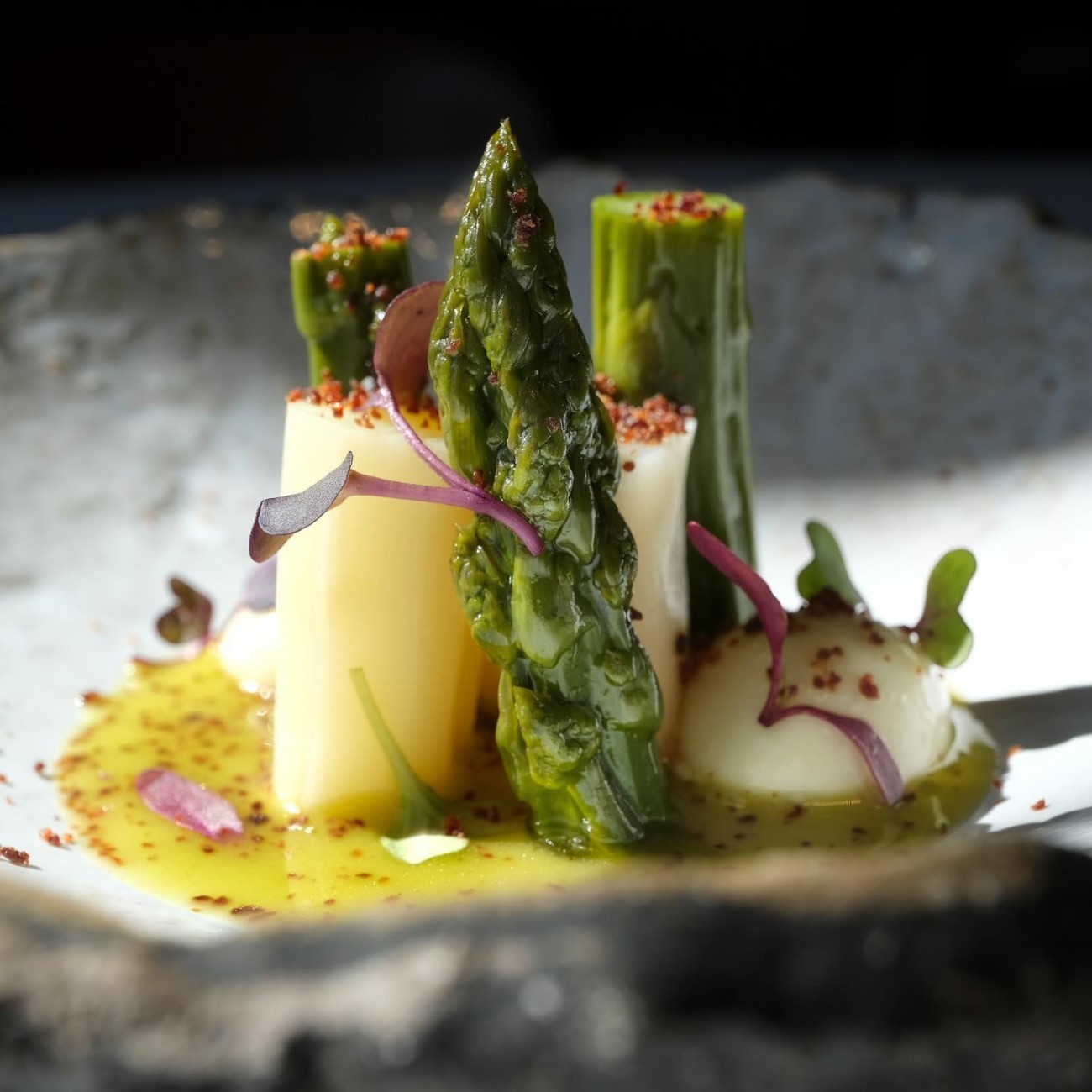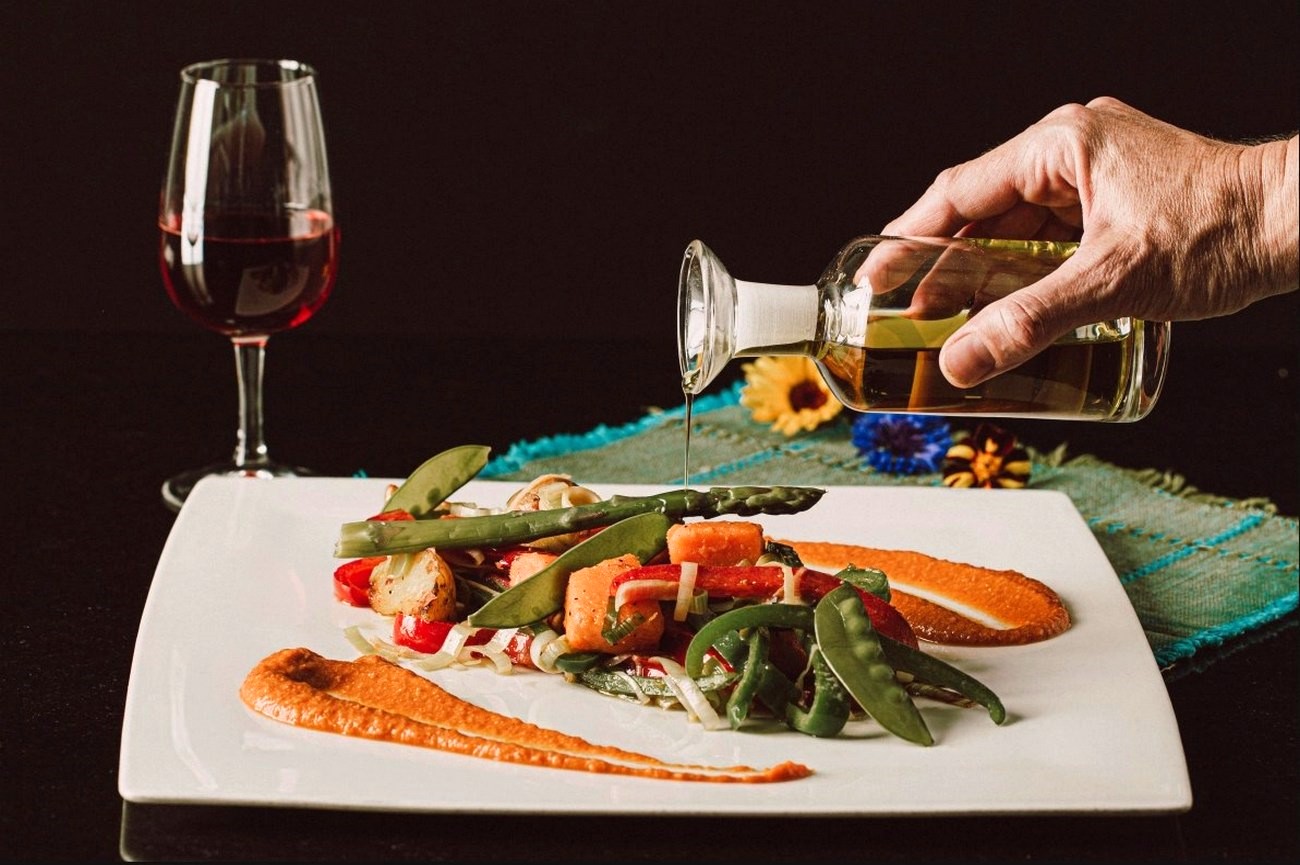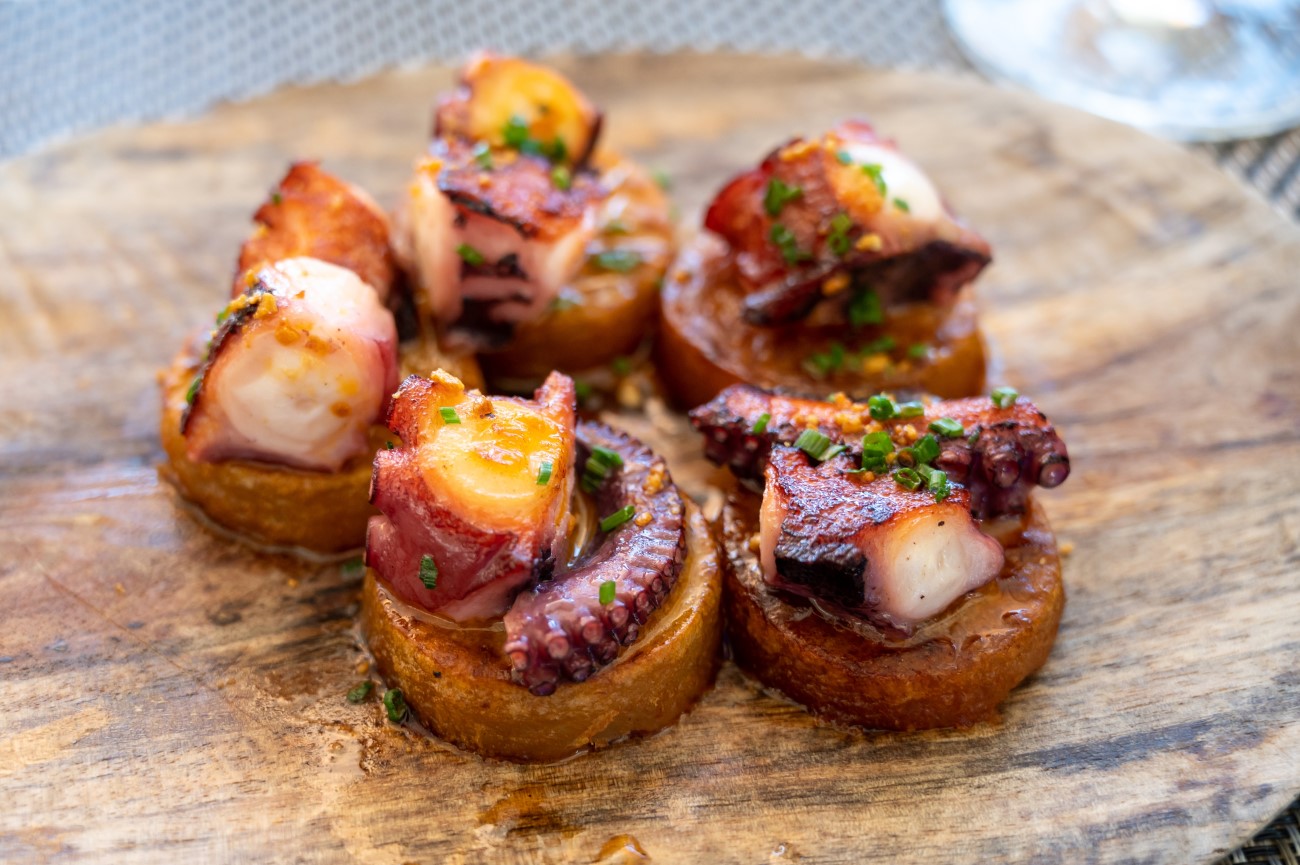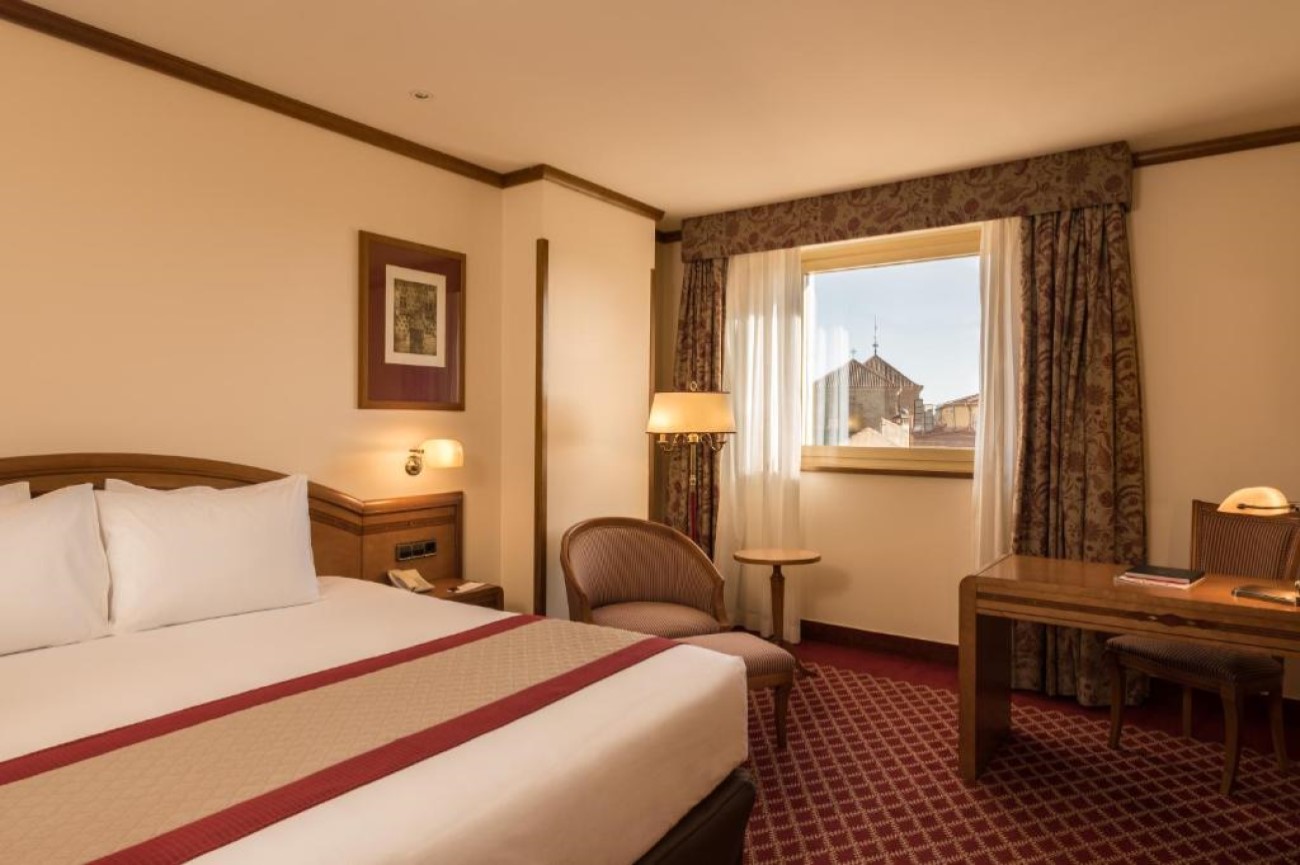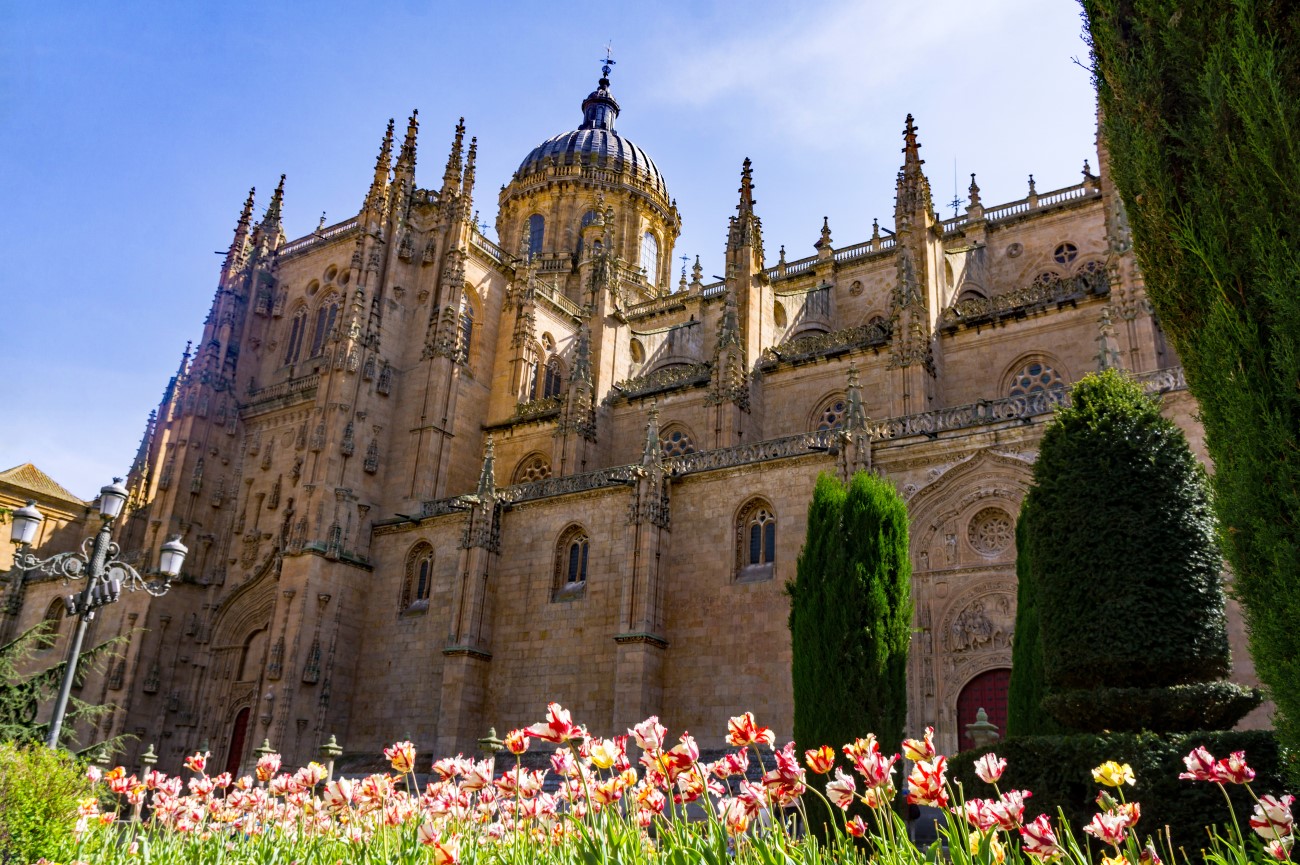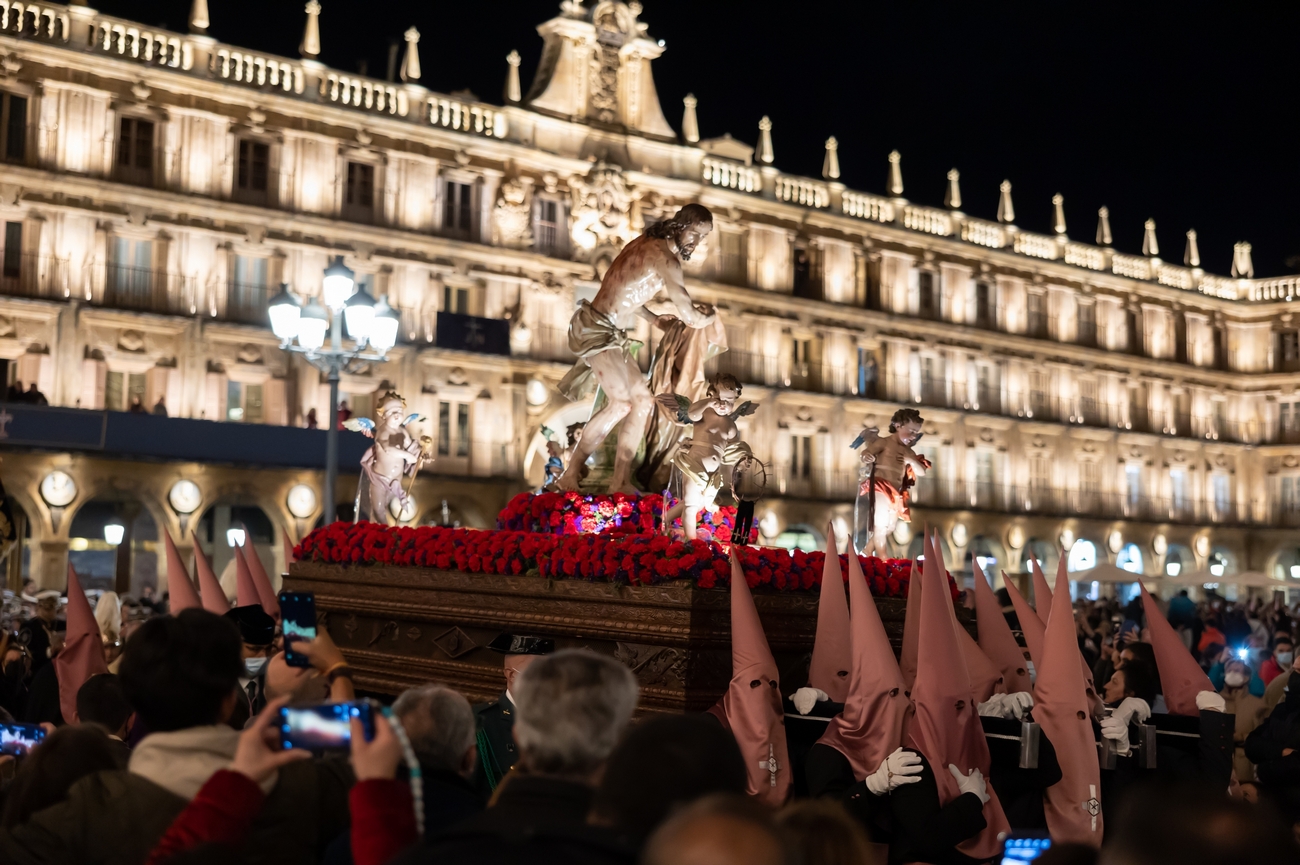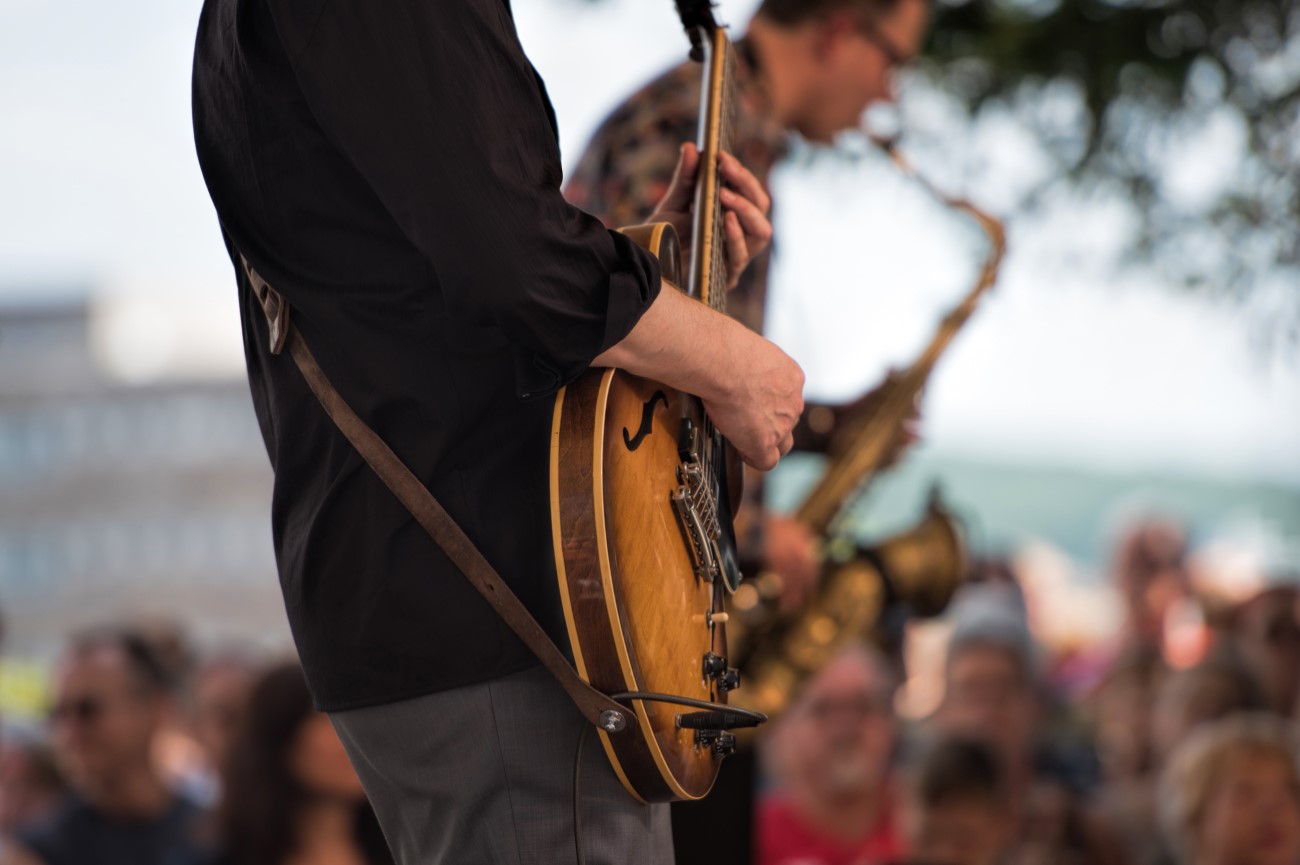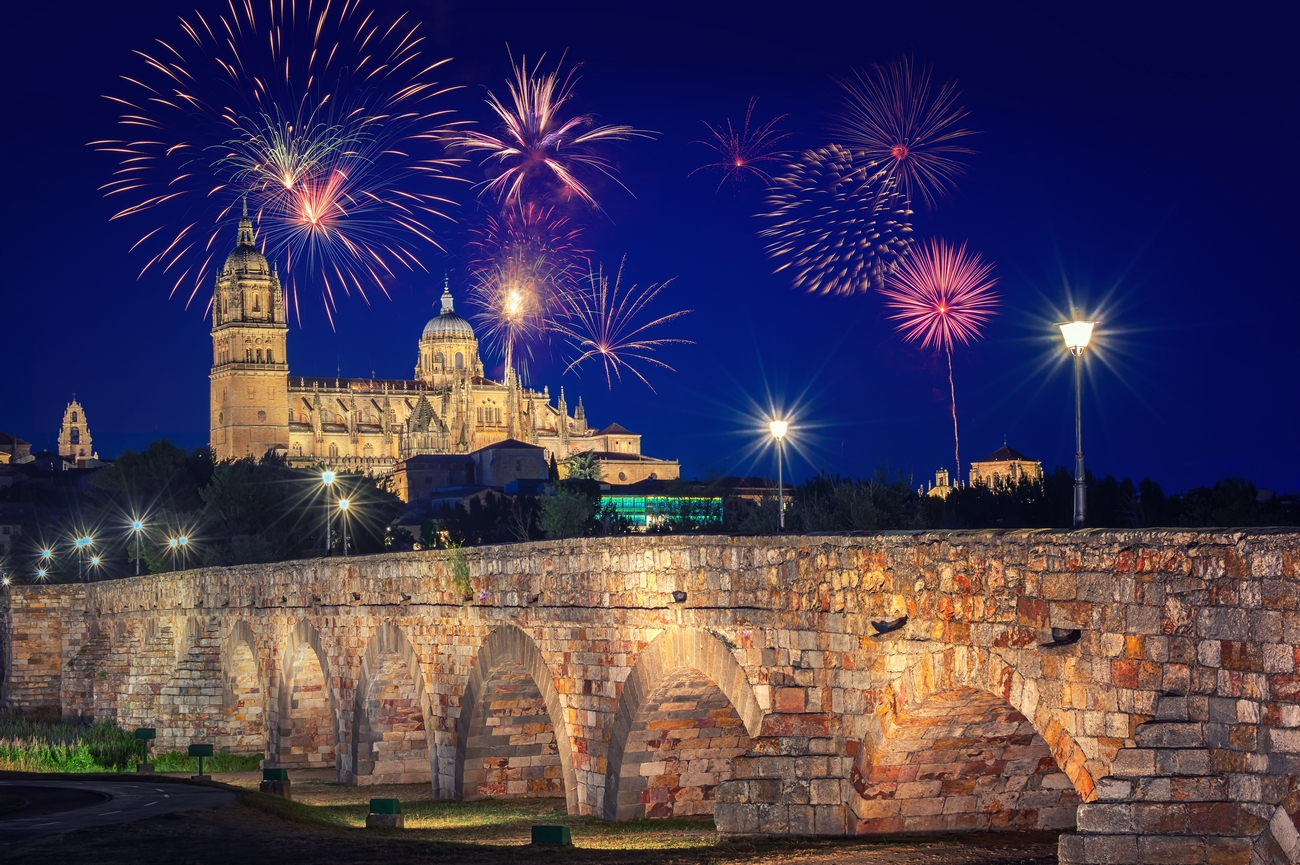What To Do In Salamanca
Salamanca is a magical city located in the northwest of Spain. It’s famous for its sandstone buildings, which seem to change colours as the day goes on. In the morning, they’re white. In the afternoon, they turn pink, and when night comes, the lights make them yellow. This daily transformation has earned it the nickname of “La Dorada” aka Golden City.
Among these buildings is the Universidad de Salamanca, one of the oldest universities in the world. The university is still running today and gives the city a lively atmosphere, with students filling the streets every night.
Salamanca is only two hours away from the Portuguese border, but the plateresque architecture and local cuisine prove that you’ve entered a different country. It’s worth spending the night in Salamanca to see the lights reflecting on the river Tormes and get lost in the historic centre, which is a UNESCO heritage site.
Below is a suggested itinerary of what to do in Salamanca in one day, including tips on where to eat and where to stay in the city.
Morning

Wander around Plaza Mayor
As you arrive in Salamanca, head to the city's central square — Plaza Mayor. Built in the mid-18th century, it's one of the largest squares in Spain, flanked by stunning Baroque buildings. Spanish architect Alberto Churriguera designed Plaza Mayor, and you can find a medallion with his face above the city hall, alongside other notorious figures. In the past, this square was used for bullfighting, but today, its arches give room to small shops and restaurants. As pretty as it is during the day, it's worth coming back here at night, when it gets illuminated and street musicians liven up the place.
Admire the Palacio de la Salina
A few steps away from Plaza Mayor is the Palacio de la Salina. This palace wows visitors with its ornate architecture dating back to the 16th century. For a while, it was a salt warehouse, hence why it's called Salina. Now, it's home to the Salamanca Provincial Administration. There are some exhibitions inside, but the real highlight is the courtyard with its open loggia on the bottom and balconies with grotesque figures jutting out from the top.
Capture Casa de las Conchas
It's hard not to notice Casa de las Conchas and its walls covered with more than 300 shells. Completed in 1517, this house belonged to Rodrigo Arias de Maldonado, a professor at the University of Salamanca and a member of the Order of Santiago. The scallop shell is the symbol of the order, and you'll see it all over the Camino de Santiago, a pilgrimage route that crosses Spain, Portugal and France. The building of Casa de las Conchas is an example of the Spanish plateresque style, an architectural movement using ornate façades that resemble silverware. Step inside to see the interior patio and pay a visit to the city's municipal library.
Visit La Clerecia
Just opposite Casa de las Conchas, you'll find the Clerecía church. Initially called the Iglesia del Colegio Real de la Compañía de Jesús, these days most people know it as Clerecía. It was the wife of Philip III of Spain that ordered the construction of this church, which began in 1617. This Baroque-style building is now the headquarters of the Pontifical University. After visiting the church, make sure to climb up to the Scala Coeli for a spectacular view of the city's skyline.
Step inside Universidad de Salamanca
Set in the heart of the historic centre, Universidad de la Salamanca is the oldest university in Spain, founded in the 15th century. It's also one of the most iconic buildings in Salamanca, with its striking sandstone façade adorned with carvings of mythical creatures and religious scenes. While you're here, see if you can spot the "frog on a skull". Some say it will give you good luck if you find it on your own! Facing the university is a statue of Fray Luis de León, a famous Spanish poet and one of the many illustrious figures who attended this university. Take a stroll around the Patio de las Escuelas and visit the university's library, which is one of the oldest in Europe.
See the Old and the New Cathedral
Salamanca is home to two historic cathedrals which stand right next to each other — Catedral Vieja and Catedral Nueva. Erected in 1120, Catedral Vieja, also known as Old Cathedral, combines a mix of Romanesque and Gothic elements. Inside is a fascinating altarpiece depicting 53 scenes of the lives of Christ and Mary in colourful panels. Also noteworthy is the organ built in Mudéjar style at the Capilla de Anaya.
The Catedral Nueva, or New Cathedral, is much larger and dates from the 15th century. Although its architecture is primarily Gothic, it also includes Renaissance and Baroque details like the dome and the bell tower. Make sure to scale the towers and walk along the battlements, which provide spectacular views of Salamanca. The interior is also astonishing with its ornate ceilings and tall vaulted arches. Outside, keep an eye on Puerta de Ramos and see if you can spot the astronaut or the monster eating ice cream. These fun elements were added in 1992 during restoration works.
Morning tour Map
Afternoon

Stand on Salamanca’s Roman Bridge
As you approach the Tormes River, you'll find many bridges connecting to the other margin of Salamanca. Of the pedestrian bridges, this one stands out, with its stone structure dating from the 1st century B.C. Its made up of 26 arches, some of which have remained the same since the Roman era. Over the years the bridge has gone through several restorations, having been affected by a flood in the 1600s. Still, it remains an essential feature of the city's history. In the summer, you can rent canoes and paddle along the river.
Admire Art Nouveau and Art Déco at Casa Lis
Every building in Salamanca has a story, and Casa Lis is no exception. Created for a wealthy businessman called Miguel de Lis, this 19th-century mansion follows a remarkable Modernista design. Since 1995 its stained-glass façade marks the entrance to Salamanca's Art Nouveau and Art Déco museum. Step inside to see an impressive collection of design artefacts, ranging from the 19th to the 20th century, including one of the largest collections of porcelain dolls in the world.
Relax at Huerto de Calixto
After touring Casa Lis, head to Huerto de Calixto. Tucked away near the cathedral, this small garden is a great place to relax after a day of sightseeing in Salamanca. It gets its name from the Spanish novel "Tragicomedia de Calisto y Melibea", written by Fernando de Rojas in 1499. Take a seat under a tree and admire the views over the cathedral.
Visit the Convento de las Dueñas
Founded in 1419, this Dominican convent initially had a Mudéjar design, but over the years, it was modified and now features a concoction of styles. Among its most striking features is the Renaissance cloister with a pentagonal shape. Stone carvings adorn its sides, with medallions on the lower level and magical creatures looking down from the second floor. On your way out, make sure to try some biscuits made by the local nuns who still live here.
Take a tour of the Convento de San Esteban
Another convent that deserves a visit is the Convento de San Esteban, located in the Plaza del Concilio de Trento. Built between the 16th and the 17th century, it attracts visitors with its imposing façade covered with reliefs. Inside, it features beautiful cloisters, a church with a gilded altar, and a museum featuring religious items.
Capture the Torre del Clavero
Sticking out amid Salamanca's skyline is the Torre del Clavero, a 15th-century tower with an octagonal shape. It was part of the Sotomayor palace, but today, it stands alone on the edge of Plaza Colón. Before you leave the city, it's worth passing by this tower to admire the embellished turrets decorated with coats of arms.
Afternoon tour Map
Things to do with kids in Salamanca
Salamanca offers a few family-friendly attractions. You can climb up to the cathedral’s medieval towers and have fun spotting figures like the infamous frog on the façade of the University. Kids will also enjoy running around the city’s vast squares and gardens like Huerto de Calixto.
If you get tired of walking, you can always jump on the tourist train or take a boat ride along the river. Beyond the historic monuments, there are a couple of museums worth checking, like Casa Lis with its vast collection of porcelain dolls or the Museum of Automotive History, which gathers over hundred cars from several periods. If you don’t mind going a bit further, you can also check out the Adventure Park Vael Equipe, a theme park featuring zip lines and paintball about an hour’s drive from Salamanca.
Where to eat in Salamanca
Our top three restaurants in Salamanca are En la Parra, Vinodiario and Cuzco Bodega.
Set opposite the Convento de San Esteban, En la Parra is a cosy contemporary restaurant featuring only six tables. Sit down with a glass of cava and order the tasting menu centred around Iberian ingredients. The menu changes with the seasons, but always includes a few starters, a main dish (fish and meat), dessert and coffee.
If you want a lighter meal, Vinodiario is a good option. As the name suggests, this is a wine bar, but it also serves tapas. There is a wide range of wines on offer, and the staff is happy to give you a recommendation. In the summer, you can enjoy a seat at the outdoor terrace overlooking the Plaza de los Basilios.
Finally, there’s Cuzco Bodega, a small tapas bar located near Plaza Mayor. You can’t go wrong with any tapa here, but we recommend the goat's cheese with caramelised onions or the oxtail burger. Pair it with a glass of wine or sangria.
Pork is an important part of the Salamanca diet, so you’ll often find tapas with chorizo, bacon and the delicious Iberian ham. Roasted goat and suckling pig are also a few typical dishes from this region. As for sweets, try the bollo maimón (sponge cake) or the marzipan cookies.
Where to stay in Salamanca
If you’re planning to stay in Salamanca for the night, we suggest booking a room at Hotel Eurostars Las Claras or Hotel Rector.
Just a few steps away from Plaza Mayor Eurostars Las Claras is a 4-star hotel with 72 spacious rooms, some featuring a view of the city. The building has a modern exterior made up of light pink stone, which is famous in Salamanca. Inside, on the other hand, there’s a classic decor with carpets in the bedrooms and bathrooms covered in marble. Guests can enjoy breakfast at the property and use the private garage for an extra fee.
Also in the historic centre, but closer to the river is the Hotel Rector. This charming boutique hotel stands out with its Neo classical entrance and has been considered one of the best European city hotels by Condé Nast Johansens. Once inside, guests are greeted by a cosy living space decorated with stained glass windows and wooden furniture. There are only 14 rooms available in this hotel, which makes it feel a bit more homely. Suites also come with free-standing tubs, where you can enjoy a relaxing bath at the end of the day.
Best time to visit Salamanca
Spring and autumn are the ideal time to visit Salamanca. The temperatures are relatively mild during these seasons, allowing you to make the most of the city’s squares and gardens. Summer is the peak season, meaning you’ll get a lot more tourists on the streets. The weather is also much hotter, with temperatures often exceeding 30ºC. That said, it is the perfect time to catch traditional festivals like the Noches de Cultura and the Feria de Salamanca. If you don’t mind the crowds and the heat, summer is the season for you. The temperatures drop significantly in winter, reaching 0ºC in some months. There’s also a high chance of raining. This makes it the perfect time to explore the city’s museums and churches.
Salamanca Festivals
- Semana Santa: Around Easter, Salamanca celebrates the Holy Week. For ten days, this religious festival takes over the city with processions. The highlight is the Procession of the Christ of the Good Death, which departs from the Convent of San Esteban.
- Noches de Cultura: Between July and August, the city hosts this outdoor festival full of cultural activities, including concerts, film screenings, dancing and art exhibitions.
- Feria de Salamanca: In September, Salamanca honours its patron saint, La Virgen de La Vega. Lasting for about ten days, the festivities feature religious processions, free concerts and a medieval market.


